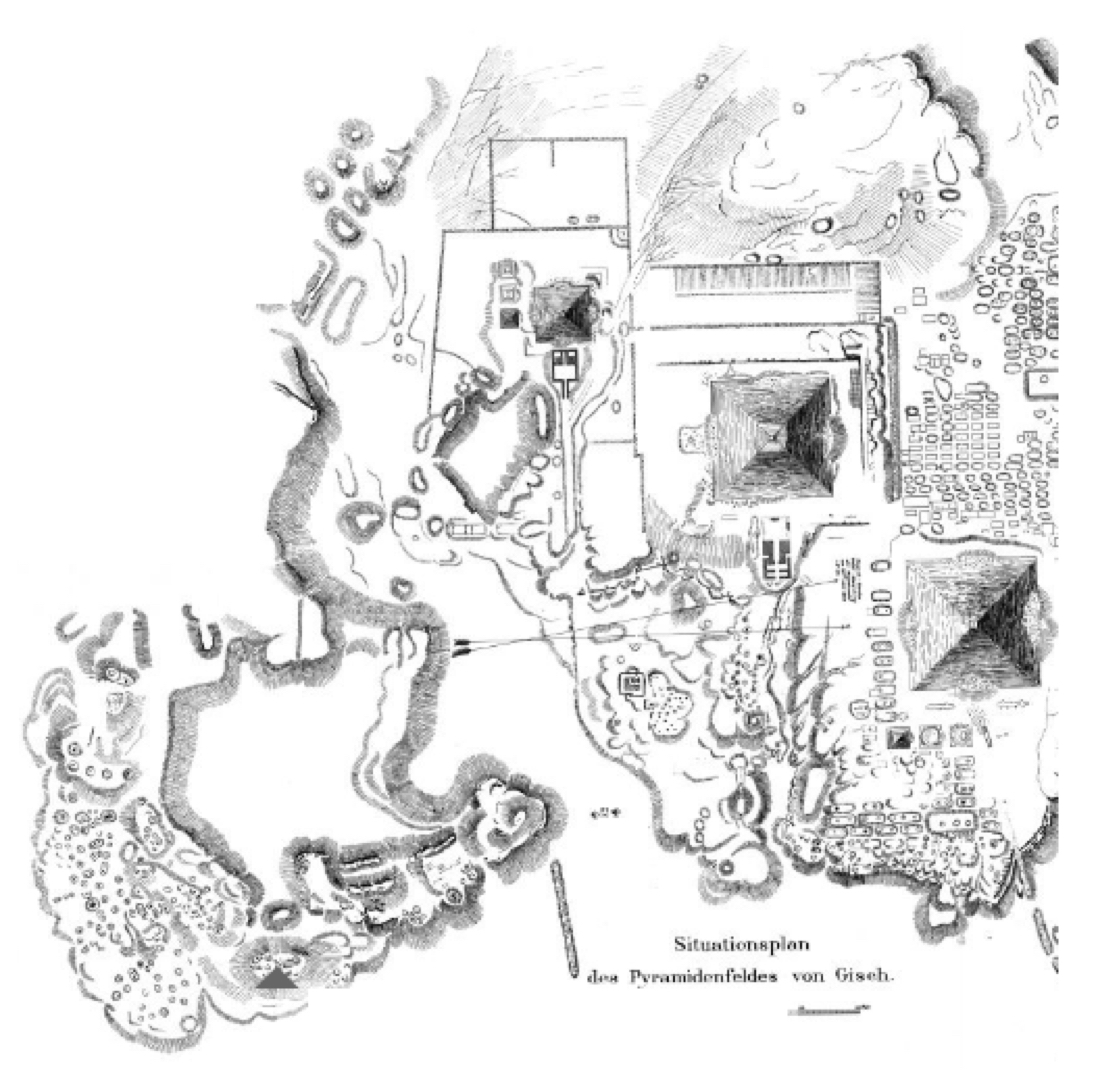:
Diary Transcription:
microfilm: begin page 30
Sunday, November 29, 1925 (continued)
(1) G 6020
G 6020 room d: Finished clearing G 6020 room d.
(2) G 6020
G 6020 A: Down 10.70 meters.
Three large blocks of stone embedded in limestone rubbish had to be broken up and removed - thus slowing down progress.
(3) G 6030
G 6030 A: Reached bottom of pit at 17.25 meters: sand except at very bottom. [ILLUSTRATION] The chamber is large with a rock cut coffin in west. The sand has run in a slope from the doorway. But under the sand is a heap of limestone rubbish. In the sand, found a small Ptolemaic-Roman saucer, evidently intrusive, and two fragments of a bowl (Old Kingdom - R.P. of fine brown drab paste see December 2). Also several Old Kingdom potsherds, two fragments of stick (decorated by peeling off bands of bark), and another fragment of wood.
G 6030 B: Removed limestone rubbish from floor of chamber and sand plaster from covering of burial receptacle cut in floor. The skeleton is visible through the cracks lying on back, head north.
(4) G 6040
[ILLUSTRATION]
G 6040 rooms a and b: Began clearing rooms of G 6040 chapel, entering north doorway into a small square antechamber a. From this a door leads west into a long room b. Also from a a very narrow door leads south into a court (?). The upper part of the north niche in b has been torn out by modern antiquity thieves. The architrave above bears an offering.
microfilm: end page 30
-
- Classification
- Documentation-Expedition diary pages
-
- Department
- Harvard University-Boston Museum of Fine Arts Expedition
-
- Credit Line
- Harvard University–Boston Museum of Fine Arts Expedition
-
- Display Page Dates
- 11/29/1925
-
- Author
- George Andrew Reisner, American, 1867–1942
Modern People
-
- Type Author
- Nationality & Dates American, 1867–1942
- Remarks Egyptologist, archaeologist; Referred to as "the doctor" and "mudir" (Arabic for "director") in the excavation records. Nationality and life dates from Who was Who in Egyptology.

